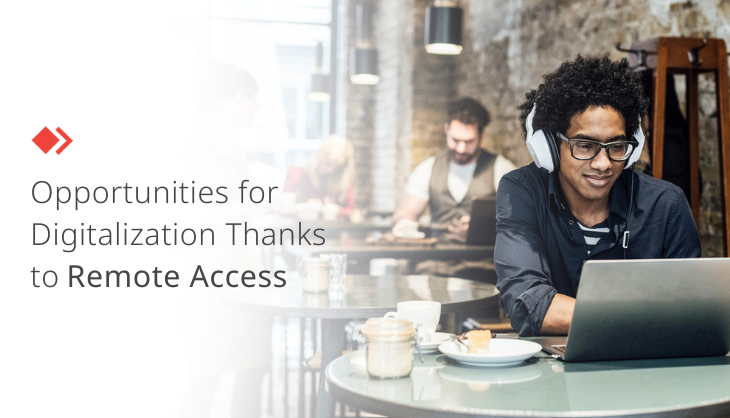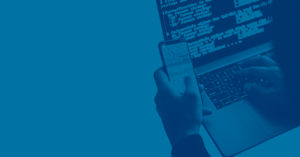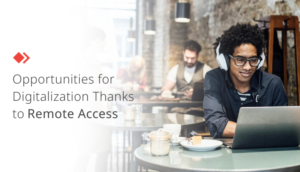How Remote Desktop Software Revolutionizes the Working World
Remote Work is not a passing trend, but rather a concept that is establishing itself for many people in companies – but also for those who are self-employed – which has a significant influence on today’s working world and culture. In times of ongoing digitalization, this development is turning out to be a great opportunity for companies and their employees. It virtually promotes restructuring and brings about some improvements in the working world.
Goodbye Office Space – How Hybrid and Remote Work Models Lead to Cost Savings
Since the pandemic, being physically present at the office is no longer a must in most areas of the working world. Meetings can take place virtually, and data or applications can be accessed via secure Remote Access Technology without any problems.
A great advantage of teleworking or Remote Work is the saving on rent in office spaces. After all, office sizes can be decreased and commercial properties can even become unnecessary altogether.
Smaller offices can be used more efficiently and benefit from the shared desk concept, where a certain number of flexible workstations are made available in a company, and employees are allowed to pursue a hybrid working model. This means they can decide for themselves when to go to the office and reserve a shared desk in advance – or work from home or remotely, instead.
Fewer Business Trips With the Help of Remote Access Technologies
Another factor that has gained in value as a result of the pandemic is the reduction of business trips and the associated cost savings. Business trips were greatly reduced during the pandemic to protect staff due to a lack of planning certainty and a lack of transport and accommodation options.
Advancing digitalization holds great opportunities, as it makes Remote Access, virtual meetings, and working from anywhere possible. In Germany alone, according to the VDR Business Travel Analysis 2020, spending on business travel has decreased from EUR 55.3 billion (in 2019) to EUR 10.1 billion (in 2020).
Making teleworking and Remote Work easy and at the same time secure are therefore essential building blocks within digitalization. Work processes can be made much more efficient and lead to an improvement in the cost structure of businesses.
Work-Life Balance in Times of Digitalization
More than ever, a good work-life balance is crucial in today’s working world. How can people give their best while staying healthy and balancing their jobs and family lives? This question is not easy to answer and requires a flexible construct of different means – e.g. working hours, premises, financial resources, and technology.
Despite the best virtual communication tools, some people do not like to work from home. The reason for this can be cramped living conditions, interference from others, or a poor internet connection. But the partial lack of separation between work and private life also plays a significant role.
A shared desk concept can help here – or two currently very popular trends: “co-working” and “co-living”. These trends were not slowed down by the pandemic but accelerated instead. In Germany alone, co-working spaces have quadrupled in recent years.
Flexibility Thanks to Co-Working: Remote Work Par Excellence
Co-working is, in simple terms, an office space where different people from different professional fields work under one roof. Companies have the option of renting a separate workspace that is only intended for a team or is generally reserved for the company. Employees can decide where to work from, and they can also use the open area of the co-working space.
Co-working spaces thus provide an alternative to permanent teleworking, as it prevents the loss of good employees and enables them to work in a modern and flexible way. Co-working brings many advantages, e.g. increased productivity, new ideas through an inspiring, creative, and motivating environment, as well as a strong “community spirit”. Such a working environment can lead to a better work-life balance for many people. Through so-called “flex desks” in group offices, for example, day tickets can be booked in co-working spaces, giving people a high degree of flexibility.
Co-Living: A Dream for Digital Nomads
“Co-living” offers similar benefits as “co-working” and basically involves the same concept but goes beyond work – through benefits such as accommodation, the possibility to have a city guide as well as active leisure time with co-living colleagues. One example is the Co-Living Space “SameSame” in Lisbon, Portugal.
For Digital Nomads or people who like to explore, this is a real gift, which in turn is made possible by remote working. The overall experiential package is attractive here, as co-living is all about working together, living together, and exploring together, with privacy guaranteed through separate rooms and flats.
Most companies nowadays allow remote or hybrid working models – but some businesses balk at this. Of course, some professions make living this concept impossible due to their nature.
Optimal Remote Access to Large Amounts of Data for Freelancers
Many young people can imagine working as freelancers, whether for an indefinite period or for a few years. Digitalization is certainly promoting a certain “freelancer boom”. Another reason is the shortage of skilled workers, which increasingly forces companies to act more flexibly and resort to external solutions.
Freelancers in the creative environment often work with an immense amount of data, which, in turn, must be available remotely. To act securely and quickly, it is essential to use a reliable Remote Desktop Solution.
One example is the photographer Deniz Saylan, a freelance photographer and filmmaker, who cannot take his large image and video files with him to all appointments and trips. He is on the road for an average of 200 days a year and needs constant access to his data. To solve the issue, he takes a laptop with him and accesses his data at home securely and quickly via Remote Access Software.
Conclusion
Digitalization enables new, flexible ways of working. Through the 2020 pandemic, many people and companies have seen how they can use modern Remote Access Technology to cut down costs and rethink the way they work. More productivity, more time for the family, and travel cost reductions are certainly among the main benefits resulting from the ongoing transformation.
To stay on the safe side, the choice of technology used is paramount. Remote Access Tools like AnyDesk can help to get the job done safely and quickly so that nothing gets in the way of either data security or work-life balance.







